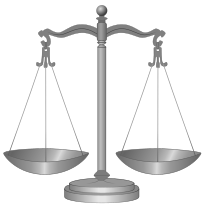By Alex G.
1. Know What Can Be Copyrighted.
If you're going to avoid breaking copyright laws, you're probably going to need to know what can be copyrighted. As I was researching copyright law information for my Business Law class, I stumbled upon this webpage and was shocked to discover that, as well as books and music, people can copyright photographs, dances, buildings, and even sculptures. Believe it or not, even maps can fall under the copyrightable picture category. Don't worry about using Google maps or Mapquest though, because you aren't specifically using the maps through your own domain.

2. Only Write Criticisms and Parodies of Copyrighted Works.
Have you ever noticed that movie critics like Roger Ebert don't have to seek out copyright owners for the films he critiques? This is because, though people cannot write stories based on copyrighted materials, we can write critiques and parodies. The Fair Use doctrine (see number 4 for a further explanation) doctrine allows us to make fun of movies and books! So feel free to do so, just don't write stories based on characters or the storyline from a copyrighted work.
3. Realize that even Images Without a Watermark could be Copyrighted.
Some people like to think that just images with a watermark or copyright label are free game, and this isn't true. As a matter of fact, in the USA almost all privately created or original work after April of 1989 are copyrighted, whether they have a notification or not.
4. You Have Fair Use!
In certain circumstances, you are allowed to use, for example, clips from a movie to show your point in a movie review, or show a short snippet of a song in a project. This is thanks to a doctrine called Fair Use. However, to continue to avoid breaking Copyright Law, you have to stay within your limits of how much you can use of the copyrighted product.
5. Don't Use Obviously Copyrighted Images.
When putting together a powerpoint or otherwise visual project, be sure to avoid using images with watermarks or copyright marks somewhere on the page unless you have permission for use from the artist or photographer. This happens frequently when people search for images on google and use them without regard to the owner of the image. An example of an obviously copyrighted image:
 (This image is from DPhoto Journal, a website dedicated to Digital Camera Reviews & Photography Tips.)
(This image is from DPhoto Journal, a website dedicated to Digital Camera Reviews & Photography Tips.)
No comments:
Post a Comment